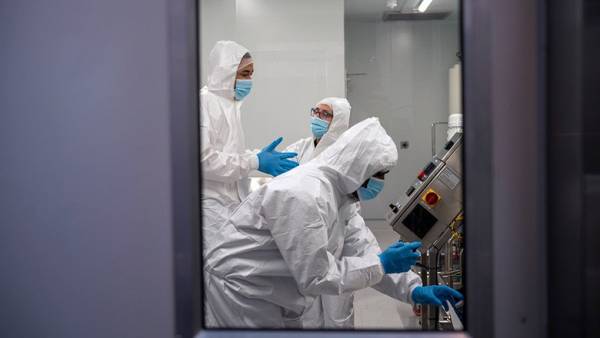
The scientist recalled that a large number of people with immunodeficiency live in the territory where omicron was first detected. COVID-19 can stay in the body of such patients for a long time and mutate, Ginzburg explained. The fact that the emergence of new strains of coronavirus in South Africa is due to a high proportion of HIV infections among the young population, the head of Rospotrebnadzor Anna Popova said earlier.
“They have an immunized layer there with various pathogens of infectious diseases, including, I do not exclude, coronaviruses of various genotypes, they were sick very often. Against this background, when a virus exists in one organism for a long time, it accumulates an infinite number of mutations,” the head of the Gamalei Center told Interfax.
Ginzburg also recalled that “coronaviruses in general develop perfectly in animals, reproduce, exist and mutate in them.” In this regard, it cannot be ruled out that the virus was transmitted from one animal to another, changed, and then re-transmitted to humans.
“Therefore, it seems to me that no drugs and human influence such as construction, man-made, human, anthropogenic intervention are required to explain all these phenomena,” Ginzburg summed up.
On December 17, the president of the Russian Academy of Sciences (RAS), Alexander Sergeev, said that due to the large number of mutations in omicron, it seems that someone forced the coronavirus to mutate and it eventually became the way it was discovered. The most meaningful version of the origin of this strain, according to the scientist, is based on the assumption that the changes in omicron are related to the testing of a certain drug against the delta strain.
Previously, Corresponding Member of the Russian Academy of Sciences, Head of the Cell Proliferation Laboratory of the Institute of Molecular Biology. Enegelgardt RAS Peter Chumakov also admitted that “omicron” was created by British scientists to end the coronavirus pandemic. According to the expert, the South American variant is not “just a mutation”: it contains all the changes that were known and encountered in the coronavirus when it evolved.
The omicron coronavirus strain was discovered in southern Africa in the first decade of November. According to the World Health Organization (WHO), this variant of the virus has 32 mutations — more than all previously known. Popova explained that the presence of mutations increases the contagiousness of infection.
According to WHO, omicron is spreading faster than previously known strains. According to the latest information, it has already been found in 89 countries around the world. In Russia, this variant of the virus was first detected on December 6. At the moment, 25 cases of infection with omicron have been recorded in the country.